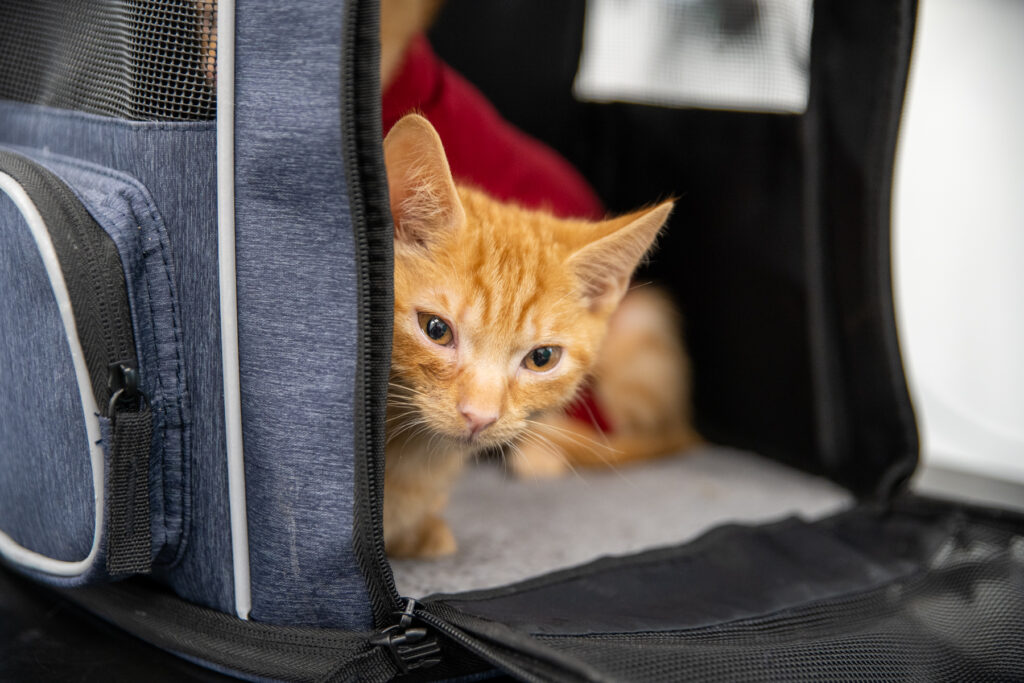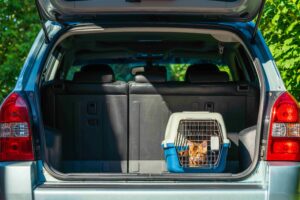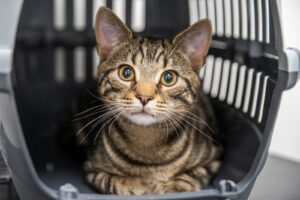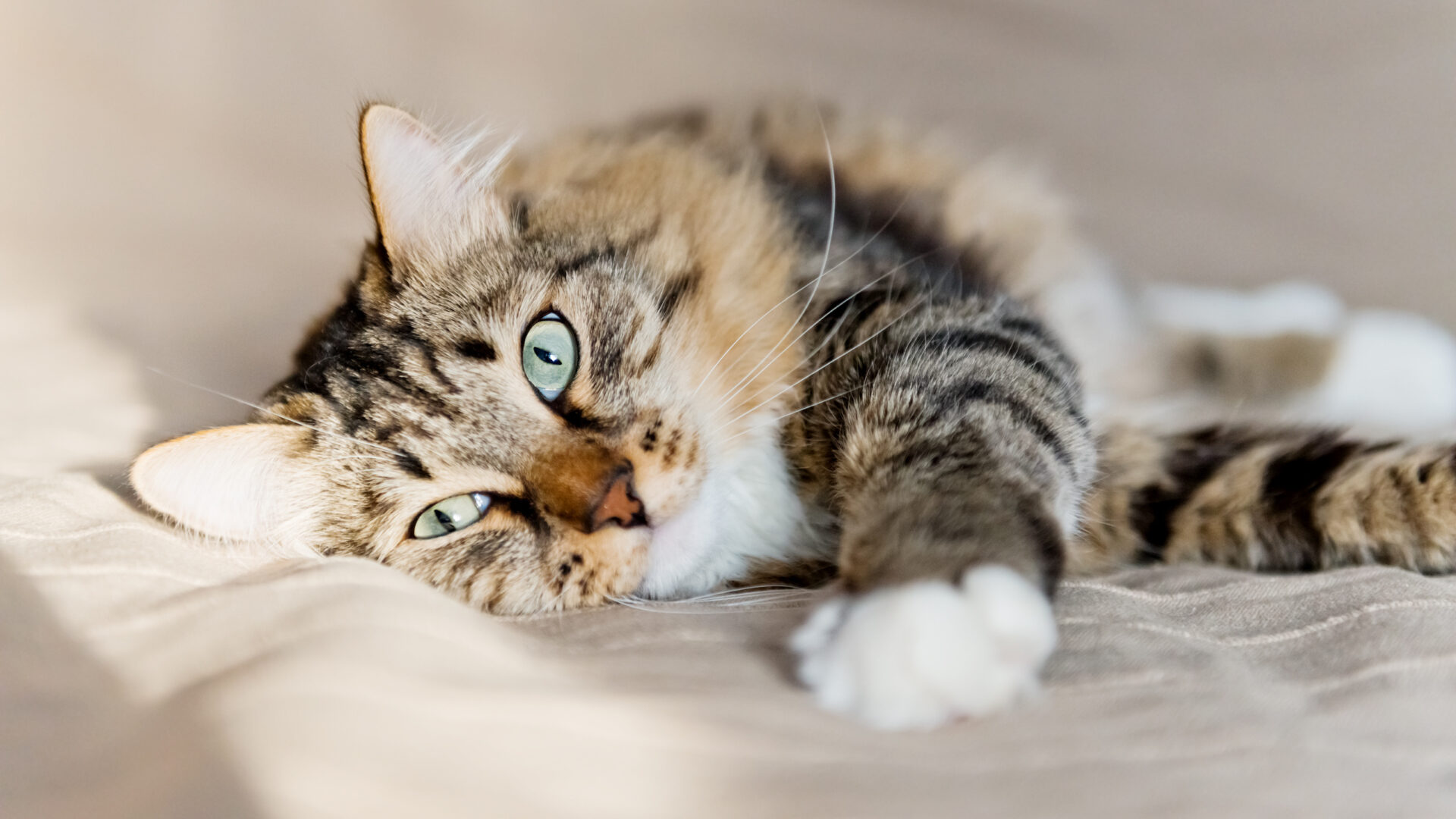Updated: 24/04/25
We appreciate that catching cats and transporting them to the vets can pose a mission at the best of times!
However, it can be incredibly distressing for both you and your cat if they manage to escape on the way to (or from) an appointment!
To help prevent this, you should always choose a carrier that is safe, secure and purpose-built.
On this page:
- Before your cat’s appointment
- Travelling to the practice with your cat
- When you arrive for your cat’s appointment
- Travelling home

We have compiled a list of our top tips to make journeys to the vets less stressful (for both you and your cat!):
Before your cat’s appointment
- Ahead of a vet appointment, leave the cat carrier out and open at home for your cat to explore. Food and toys can be used to encourage your cat to venture inside.
- Choose a purpose-built, solid cat carrier which has access at the front and fully opens from the top with easy-to-open clips.
- Place an absorbable, non-slip liner in the carrier that smells of home and can be washed afterwards if needed. You can also use a pheromone spray to reduce your cat’s anxiety and stress (ask your local vet practice for more information about this).
Travelling to the practice with your cat
- On the day of your cat’s appointment, calmly pick them up and place them in the box. If they are wriggly or worried, you can wrap them in a towel which has been sprayed with pheromone spray.
- It is important that your cat is safe and secure for your journey to the practice. This is best achieved by use of a cat carrier (you can ask your veterinary practice for advice on the best design if you are unsure).
- Driving without your cat appropriately secured may be classed as ‘driving without due care and attention’, which is a finable offence and may also invalidate your car insurance in the event of an accident.
- For car travel, try to prop the carrier so it is level on the back seat (you can place a folded towel or blanket under the back of the carrier to achieve this). Secure the carrier with the seat belt fastened across (some baskets will have specific seat belt hooks to help with this). Cover the carrier with a towel and soothe your cat by talking to them reassuringly.
- For cats who get stressed or sick while travelling, it is best to withhold food for two hours before you travel (unless there is a medical reason for you not to do this).

When you arrive for your cat’s appointment
- Once you have arrived at the practice, the safest way to move the carrier is to hold the top handle with one hand and use the other hand to support the carrier from the bottom.
- When checking in for your cat’s appointment, the reception team will direct you to the best place to sit in the waiting room. In some cases there may be a designated cat waiting area.
- Sit with the basket facing towards you so your cat can see you, and keep the sides of the basket covered so that your cat feels safe.
- If your cat tends to become stressed when visiting the practice, ask if it would be okay to wait in the car until you are ready to go through for your appointment.

Travelling home
- Follow the same tips for safe travel on your return journey home.
- If you have multiple cats, supervise them when you arrive home as the returning cat may smell a little unfamiliar after their visit to the practice.
- Try not to overwhelm your cat with attention and give them time to readjust after their vet visit.
Hopefully these tips will prove useful in preparing your cat for safe travel to and from vet appointments.
If you have any specific concerns relating to travelling with your cat or managing their stress, please reach out to your local veterinary practice for further support. Your vet can/may prescribe some medicine prior to travel to help relax your cat.

